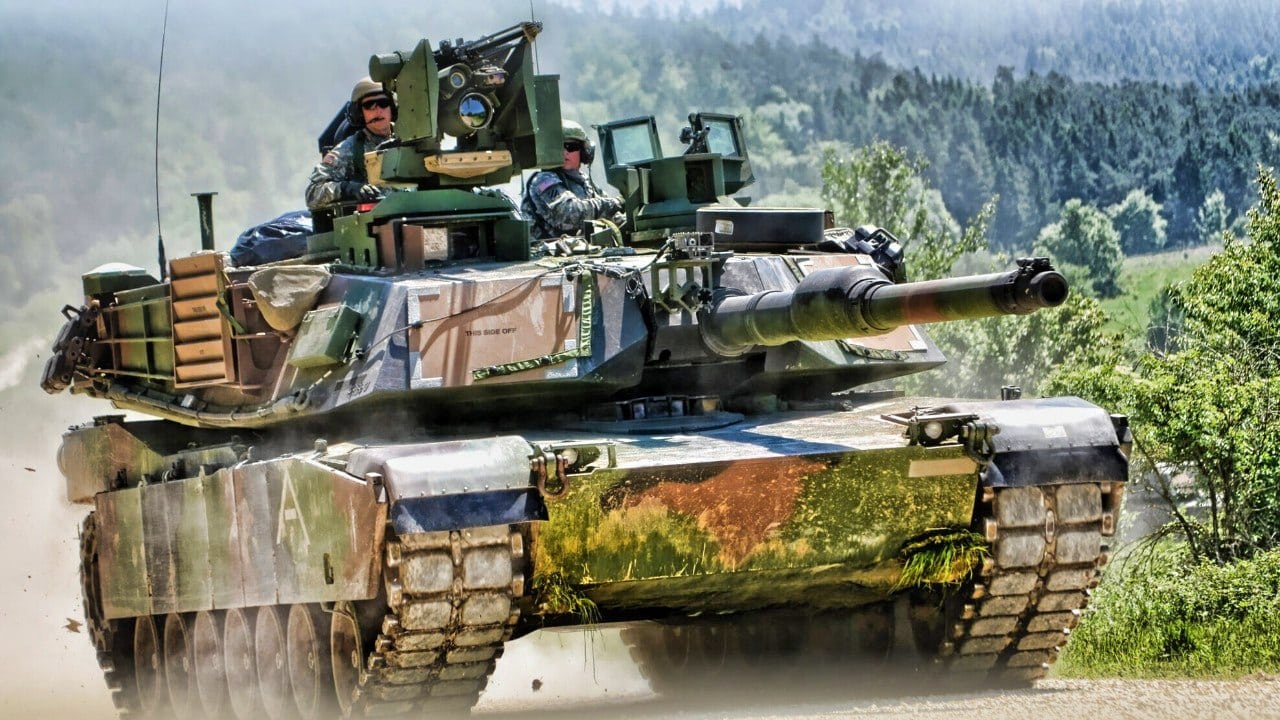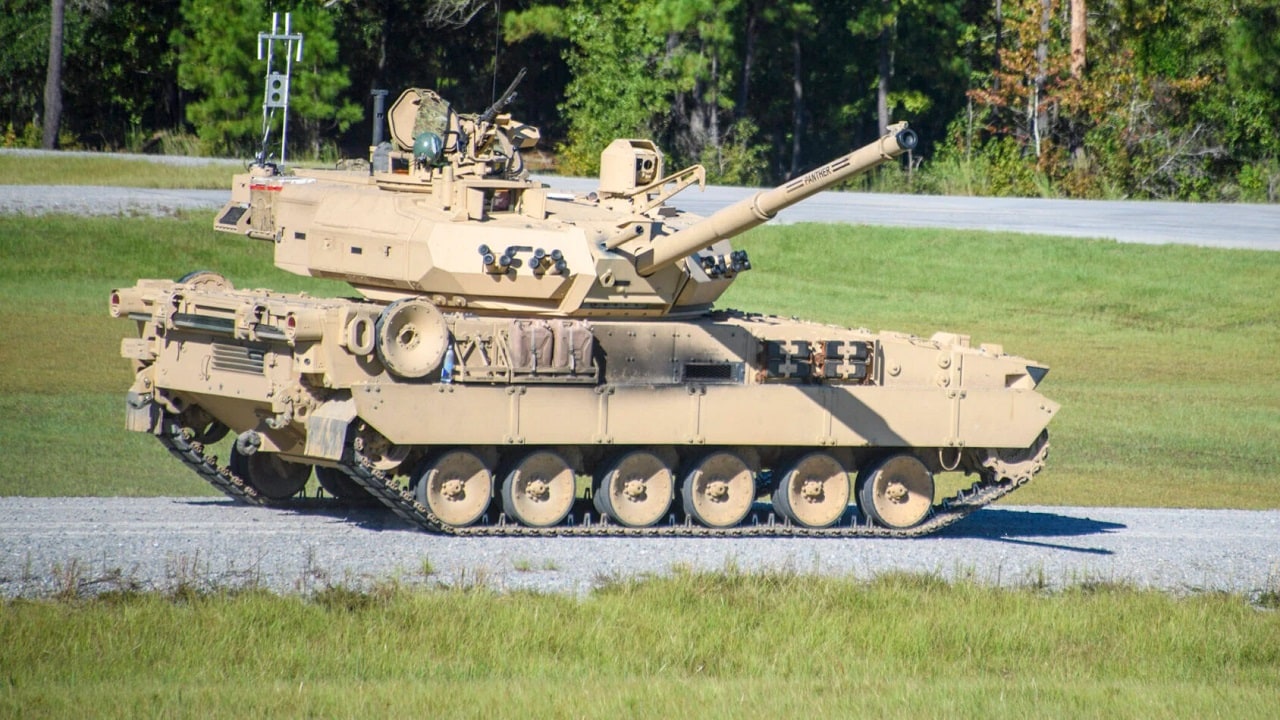It is not difficult to reconcile an unprecedented proposed trillion-dollar defense budget with an axe-wielding Army consolidating commands and canceling programs, like the new M10 Booker light tank. As the armed forces race to increase conventional deterrence, the Pentagon has lost patience with being weighed down by stuff that doesn’t add to performance.
Army Goes Rolling Along: Sorry, M10 Booker

Poland M1 Abrams Tank. Image Credit: General Dynamics.
The recent directive by Defense Secretary Pete Hegseth addressing transition and acquisition reform states that the “president gave us a clear mission: achieve peace through strength.” Reshaping is less about making the Army a billpayer for the other services than making ground power relevant for the future and making pragmatic decisions on delivering more threatening combat power sooner rather than later.
In particular, one area where the Army clearly needs to play a greater role is homeland defense. The new strategy is not part of an effort to make America an isolationist power. On the contrary, protecting infrastructure and population centers turns America into a more powerful power projection platform, negating efforts to hold US targets hostage or interfere with the deployment of US forces and exercising American power.
Defenses are an important component of peace through strength. A strong offense-defense mix, the capacity to strike an enemy and protect your homeland, is the best posture for peace through strength. That means more demands for the Army in support of space command, air and missile defense, counter-drones and cruise and hypersonic missiles, electronic warfare, and cyberspace, as well as securing US borders and supporting missions overseas. This to-do list is more decisive and demanding than the guidance from the previous administration, which requires serious adjustments.
Given these priorities, it is no surprise the M10 did not make the cut.
Losing the Light Tank
The M10 is the poster child for burning posters. A decision to dump the Booker had little to do with an aversion to armor. After all, the Army just announced the pursuit of an upgrade to the M1 Abrams heavy tank, not to mention Stryker and Bradelys are performing well. What has made the M10 the biggest loser is that the longer the project has been around, the less light the light tank has become, as well as slipping in cost, schedule, and performance (serious buzz kill for the new Pentagon leadership).
In practice, the pursuit of a powerful and practical light tank has always been a bit of a search for the Fountain of Youth. For starters, there is always the old f=ma problem. Armor’s real value comes from mobility, lethality, and the capacity to take a hit and not be flicked off the road like a fly from a picnic table.
Of course, the US Army still needs light forces, just as the armed forces could use niche capabilities for all kinds of land fights. On the other hand, when the goal is maximizing combat power as fast and effectively as possible, as in World War II, the more effective strategy is maximizing the production of conventional combat forces and adapting them as best as practical to a range of missions.
In addition, light forces should not mean one of everything except lighter. Light forces are often confused with the need for rapid deployment. Getting there fast is no advantage if the force is going to get creamed like Task Force Smith in the Korean War. Light forces are not deployed to fight armored warfare. If there is a fight in some obscure place the US Army needs to get into fast because it needs tanks, we ought to think if that’s a fight worth taking on.
Further, instant boots on the ground are not the US Army’s forte. It’s great to have light forces rapidly inserted into a theater. Still, the Army’s real deterrence is the capacity to conduct sustained land combat, and it takes time to have that force into a theater unless it’s already there.
Making and deploying mini-me tanks at great expense that would have to sit around waiting for an Army to deploy so they would be relevant is like showing up for the Super Bowl in preseason.
None of this is to say there is no utility for a light tank—if one could be built at a reasonable cost that is mobile, lethal, survivable, and sustainable. Just saying that ought not be high on the Army’s to-do list. If a program isn’t delivering well, it should not be on the list.
Shuffling the Deck Chairs
As for the rest of the Army plan –let’s be honest. The first impulse to show impact and progress is always to reshuffle the wiring diagram. So, if transformation turns into shuffling the deck chairs on the Titanic, don’t expect much more than wet feet.
That, however, does not seem to be the objective here. “I am directing the secretary of the Army,” Hegseth wrote, “to implement a comprehensive transformation strategy, streamline its force structure, eliminate wasteful spending, reform the acquisition process, modernize inefficient defense contracts, and overcome parochial interests to rebuild our Army, restore the warrior ethos, and reestablish deterrence.” There are a couple of positive outcomes that Army transformation could deliver.
More Boots on the Ground. The proliferation of headquarters and staff makes little sense in an age when effective processing, evaluating, organizing, planning, and directing is less accomplished by adding clerks, desks, offices, and typewriters in World War II. Overhead is a resource suck. We have had thirty years of transformational technology for overseeing massive operations and institutions—that’s not reflected in the current Army command structure. If faces and spaces are plowed back into operational capability, that will increase effectiveness. A field Army has a stronger warrior ethos than desk-bound fighter jockeys.
None of this is to say geography doesn’t matter. The armed forces should retain the current COCOM structure to oversee global military activities. There is too much ground and too many time zones for a lesser organizational structure to effectively cover. On the other hand, the generating institutional structures that man, equip, train, and deploy forces are fair game.
Eliminate Fraud, Waste, and Abuse. The bigger bureaucracies get, the more transparency of their activities declines, and the less clear lines of authority and responsibility are visible. It’s worth clearing the brush. It is worth bringing DOGE-like scrutiny to policies and programs.
This ought to be a priority for any government activity as the steward of US tax dollars. Still, in the armed forces, this scrutiny can help find more resources to make soldiers better warfighters.
Farewell to Arms
The M10 is a case study in the wrong program for the wrong Army at the wrong time. The cancelation is an exemplar of strategic clarity—not penny-pinching. There ought to be every expectation that the Army will continue to roll along.
About the Author: Dr. James Jay Carafano
Dr. James Jay Carafano is a leading expert in national security and foreign policy affairs. Carafano previously served as the Vice President of Heritage Foundation’s Kathryn and Shelby Cullom Davis Institute for National Security and Foreign Policy and served in the US Army for 25 years. He is an accomplished historian and teacher as well as a prolific writer and researcher. Follow him on X: @JJCarafano.

